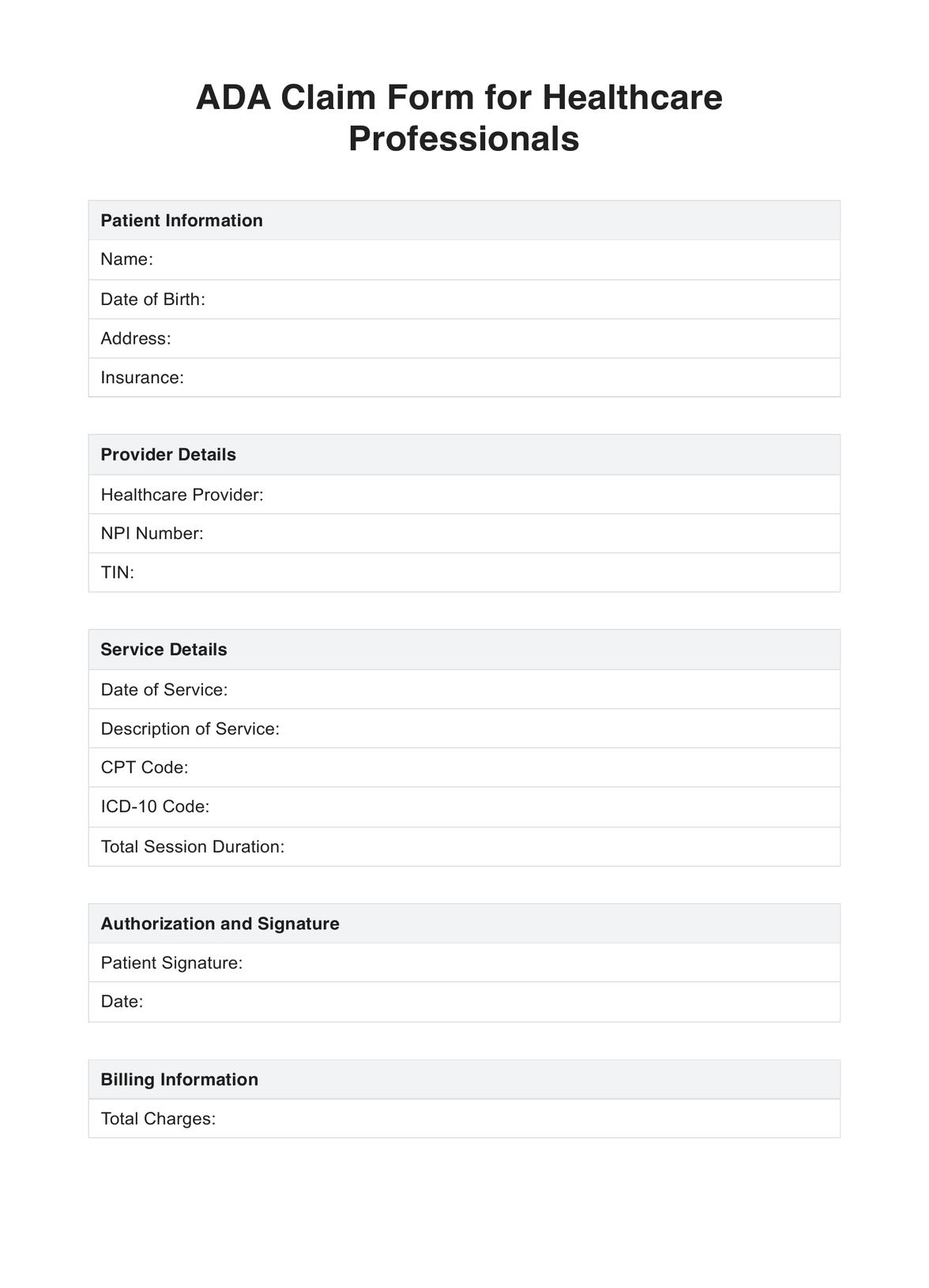ADA Claim Forms are commonly used by healthcare practitioners and providers who offer medical services to individuals with disabilities. This includes professionals such as physical therapists, occupational therapists, speech-language pathologists, and other specialized healthcare providers.

ADA Claim Forms
Optimize reimbursement for medical services provided to people with disabilities by submitting accurate ADA Claim Forms with structured documentation.
ADA Claim Forms Template
Commonly asked questions
ADA Claim Forms are used to document services provided to individuals with disabilities and request reimbursement from insurance companies, government programs, and third-party payers.
The process for submitting ADA claims includes information gathering, service description, authorization, documentation, billing and insurance details, submission, review and processing, and outcome. ADA Claim Forms help ensure accurate records and proper reimbursement for medical services provided to people with disabilities.
EHR and practice management software
Get started for free
*No credit card required
Free
$0/usd
Unlimited clients
Telehealth
1GB of storage
Client portal text
Automated billing and online payments











